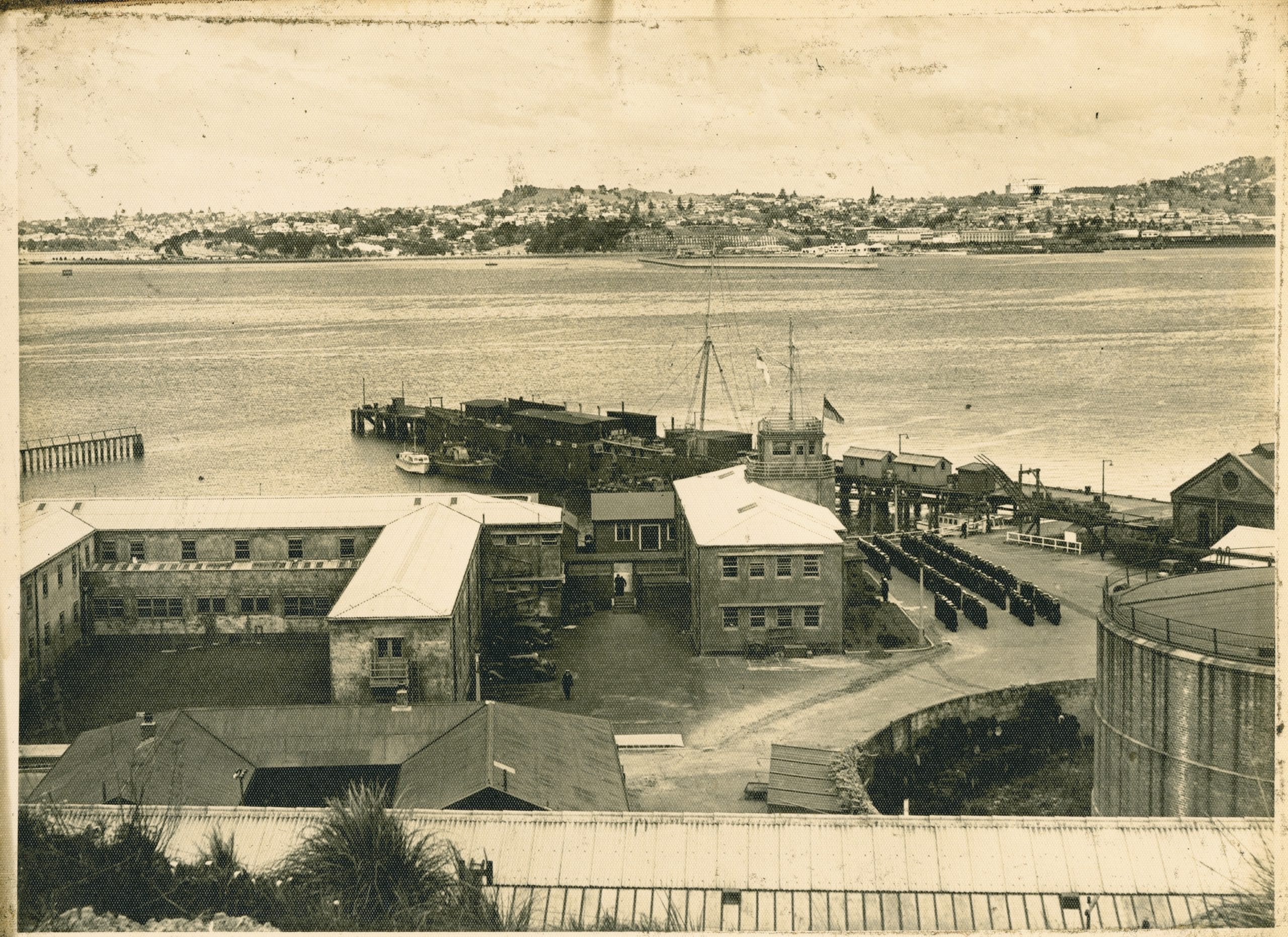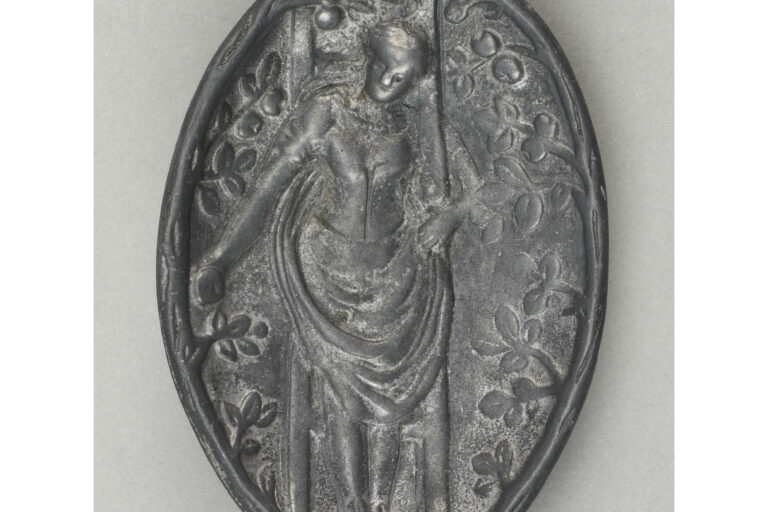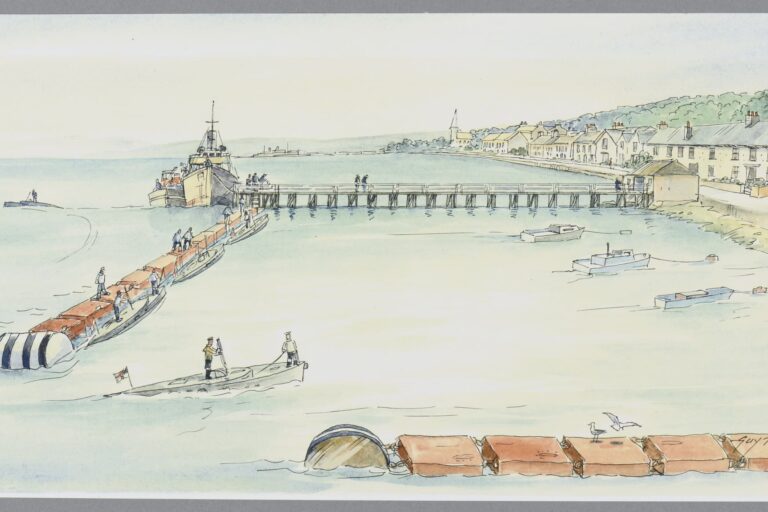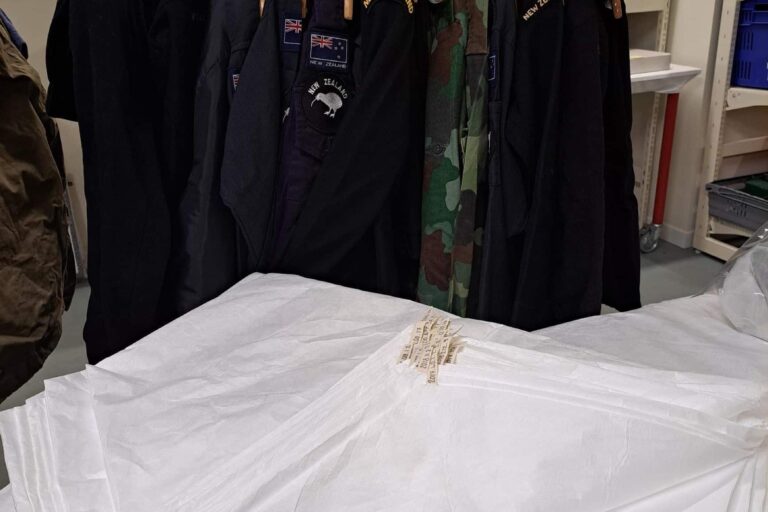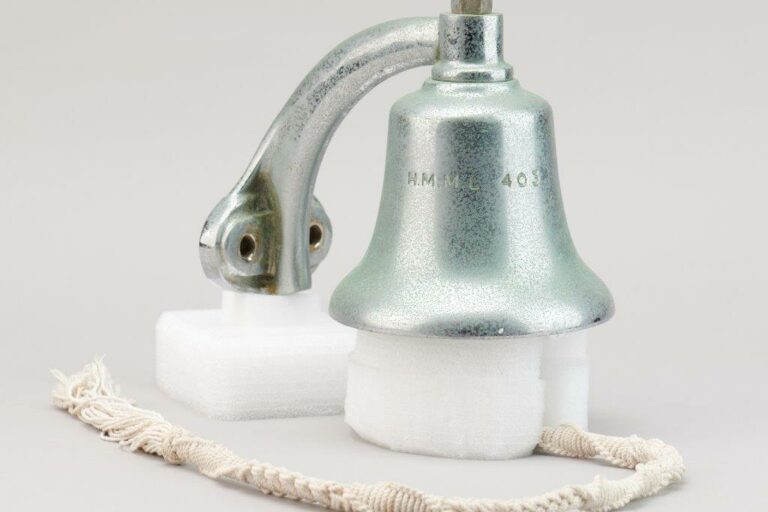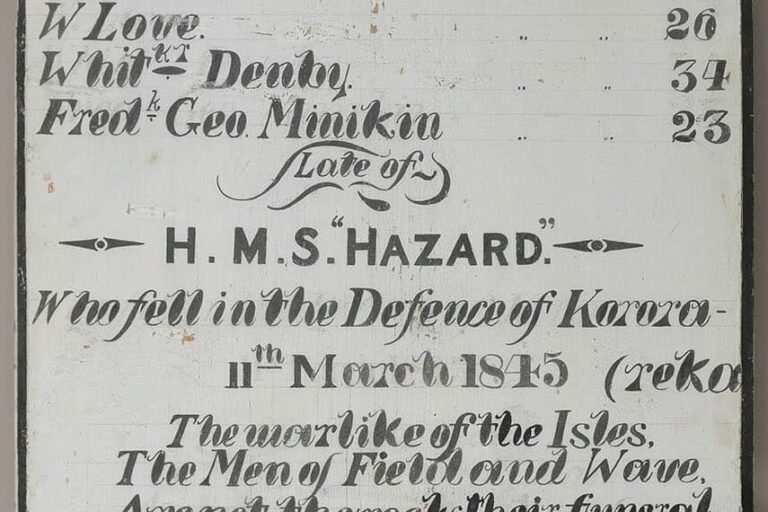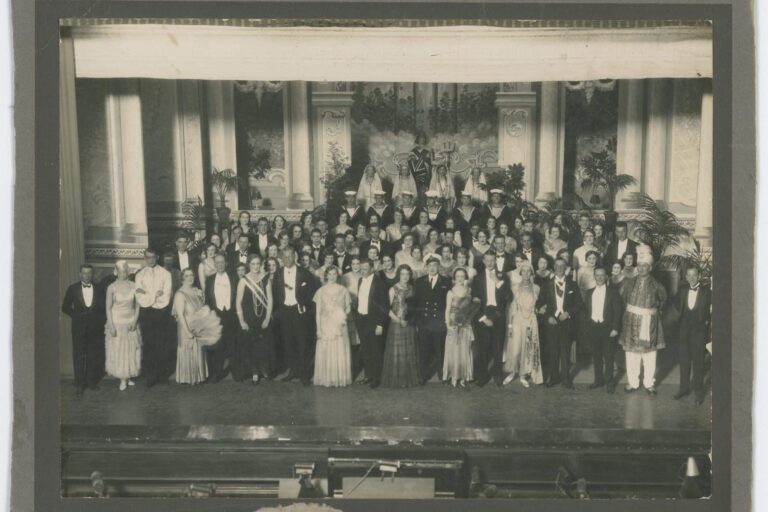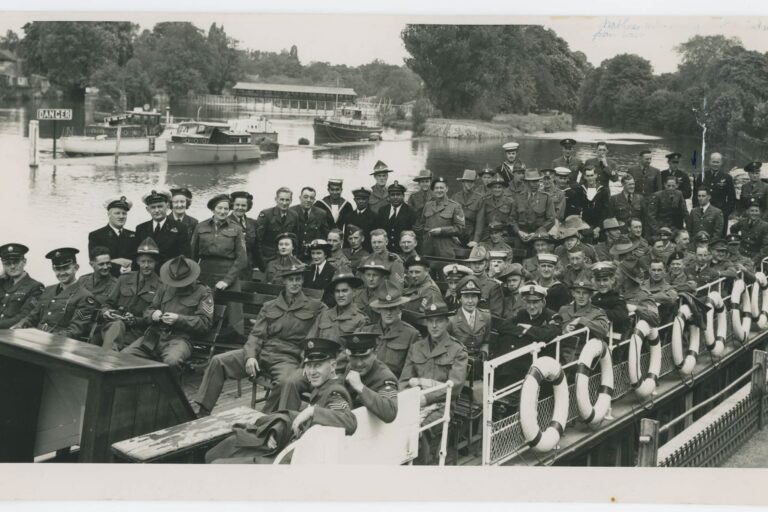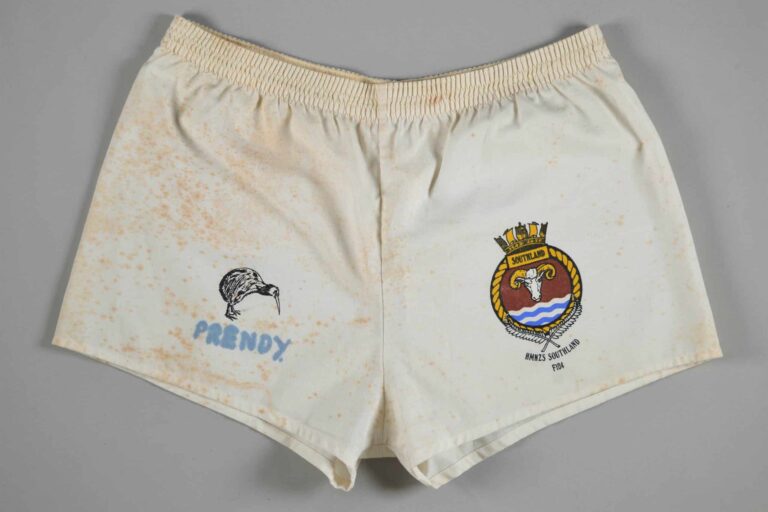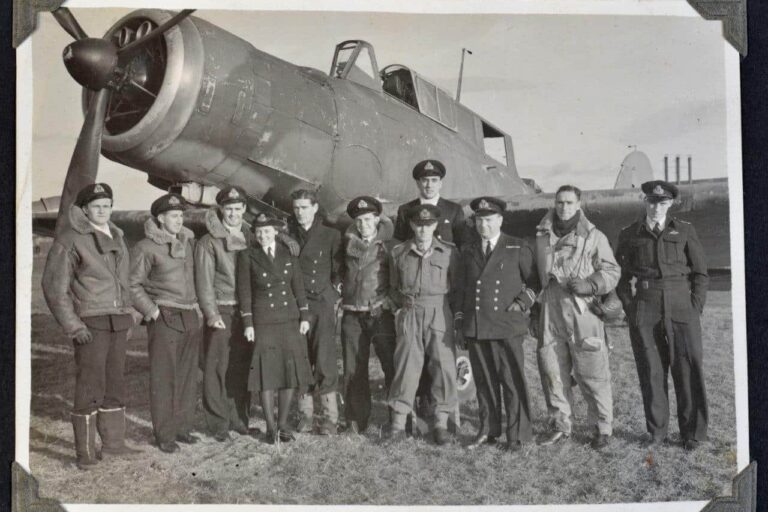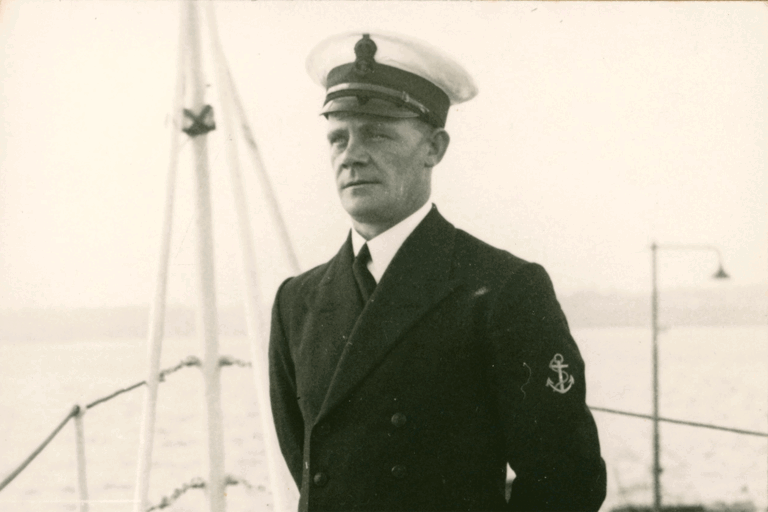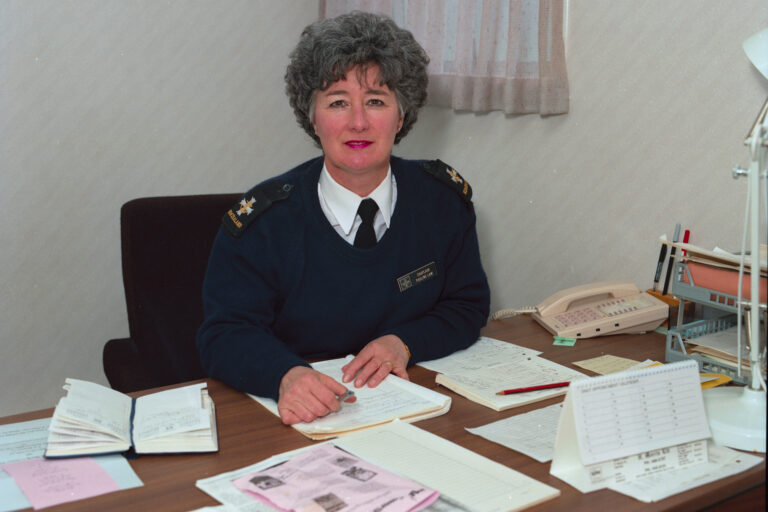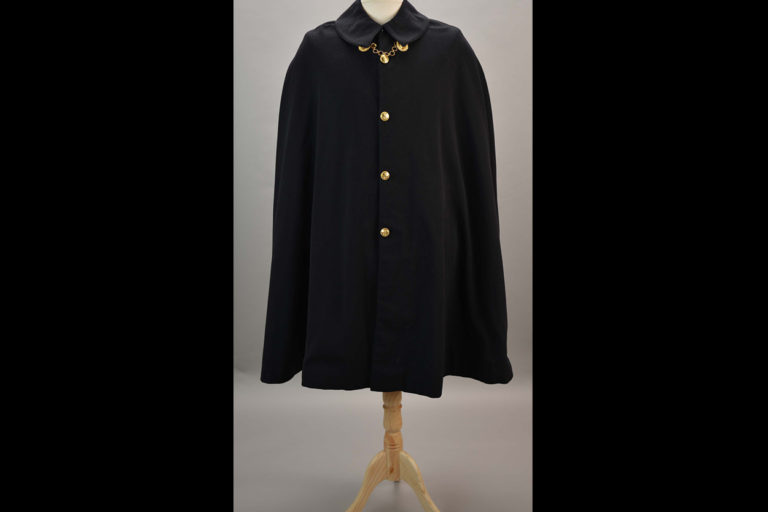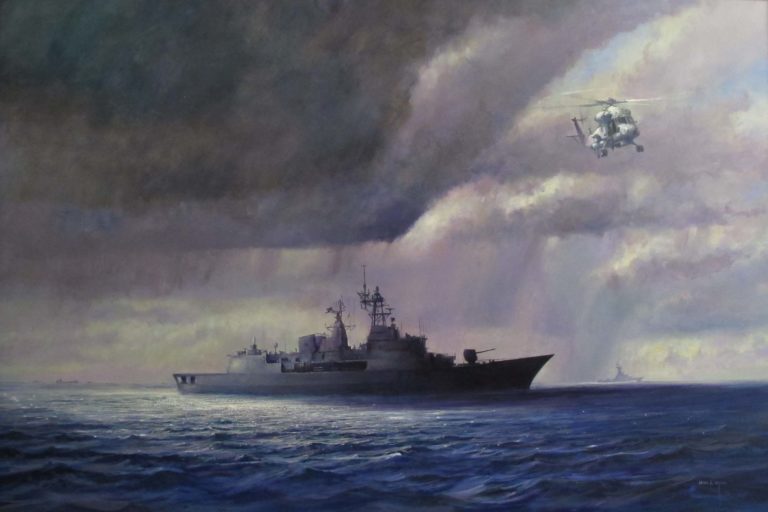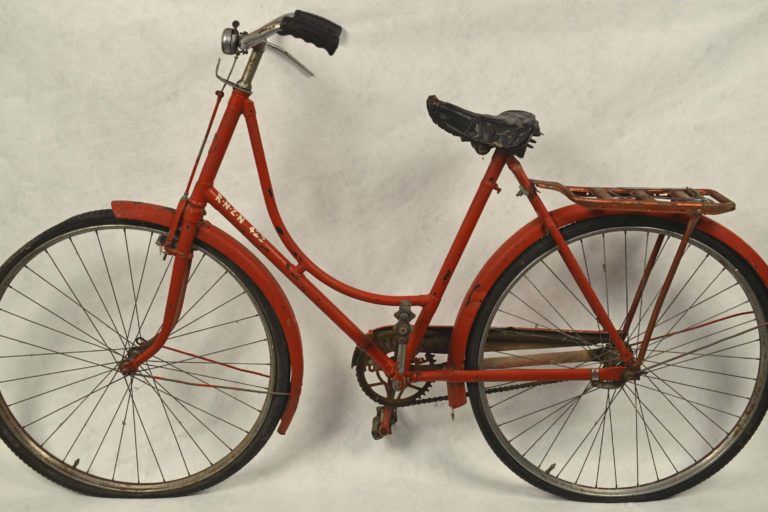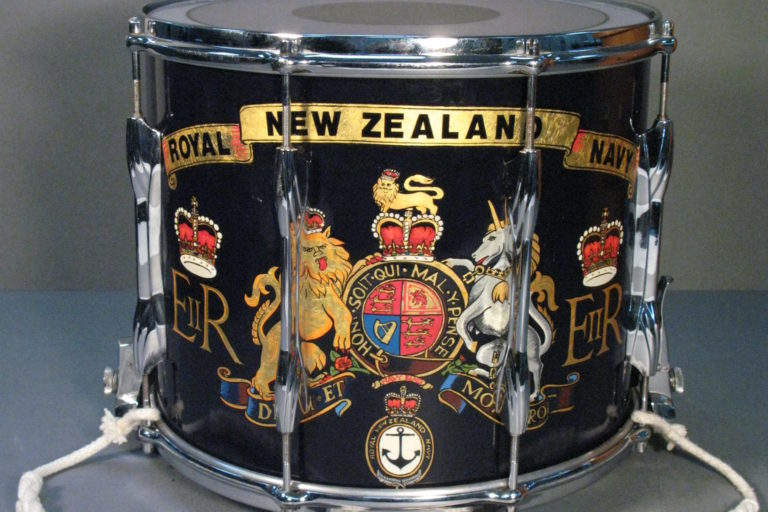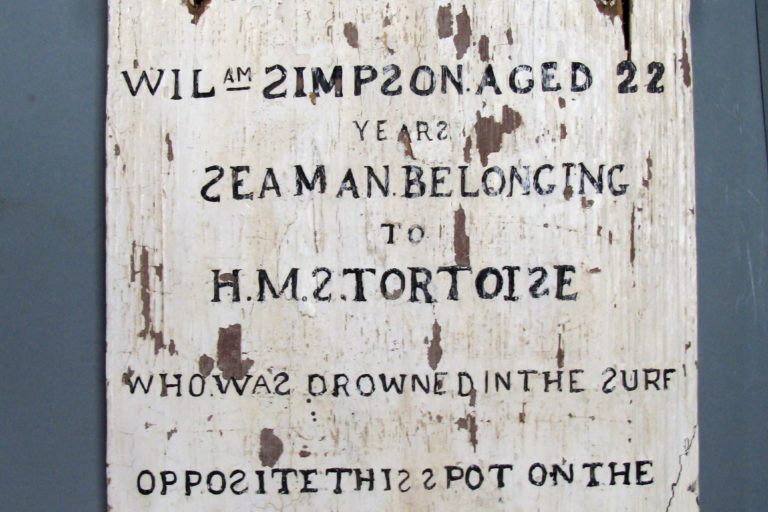Demobilization after a major war is always a very difficult process for armed forces. The New Zealand Armed Forces were certainly not exempt from the problems associated with demobilization and reorganization after the end of the Second World War. Read about the events surrounding the Mutiny in 1947.
Demobilization after a major war is always a very difficult process for armed forces. Servicemen and women who enlisted for the duration of the war were anxious to be demobilized as quickly as possible and disturbances involving such personnel have been quite common in the past.[1] Regular military personnel also often find the change from wartime to peacetime a most unsettling experience. The New Zealand Armed Forces were certainly not exempt from the problems associated with demobilization and reorganization after the end of the Second World War.
Background
In mid-September 1946 more than 800 airmen at three Royal New Zealand Air Force (RNZAF) bases in the Auckland area and at Te Rapa and Ohakea went on strike following the publication of an order requiring them to work routinely on Saturday mornings. The striking men stayed in the bases, but refused to perform their usual duties and demanded a five-day, 40-hour working week.[2] On the third day pf the strike the Air Department promulgated an order directing that all airmen who were unwilling to comply with conditions of service in the RNZAF should immediately be given the opportunity to terminate their service. Airmen who declined to take up the department’s offer, but still refused to carry out their duties were also discharged from the Air Force. Under these provisions nearly 300 mainly young airmen were discharged. The Government’s decision was criticized as setting a bad precedent and undercutting military discipline.[3] No disciplinary action seems to have been taken against the men involved in the strike although they were clearly guilty of breaches of military law.
Morale in the Post-War Navy
Like the other two services the immediate post-war years were a period of demobilization and major reorganization for the Royal New Zealand Navy (RNZN). At this time there was within the RNZN a group of disaffected long-serving ratings who wished to terminate their service, but could not readily gain their release. Some of these men had signed twelve-year engagements during the war and had by 1946-47 found that service in peacetime did not appeal to them and did not compare favourably with opportunities available in civilian life. The need to give ‘hostilities only’ personnel priority in the demobilization process and the manpower shortages affecting the RNZN meant that it was particularly difficult for these men to obtain their discharge.[4] There was it appears a feeling amongst some ratings that their concerns about conditions of service wire not being taken seriously by the RNZN. This feeling may well have had some basis in fact and was probably related to the disorganization associated with demobilization and to a breakdown in the divisional officer system within the Navy.[5]
A New Pay Code
Rates of pay in the Navy were it appears generally inferior to rates in the Army and Air Force and definitely worse than civilian pay rates. Following the cessation of hostilities work began on new pay codes for the armed forces, which were to be introduced in 1946. Serious delays in producing the new pay codes led to increasing dissatisfaction in the Navy. The government did, however undertake to backdate the new pay scales to 1 April 1946.
The way in which the new pay codes were finally announced on 1 April 1947 was most unsatisfactory. The Prime Minister, Peter Fraser, released a public statement outlining the new pay rates, which made no reference to them being backdated to 1 April 1946. The senior officers at HMNZS Philomel were placed in an invidious position because they did not have copies of the new pay code when the Prime Minister’s statement appeared. However it appears as if trouble was anticipated. In late march 1947 MAA Paul Tasker was sent to the naval radio base at Irirangi by Commander Phipps orders with the instruction to keep them [the ratings] calm. No problems were recorded at this site suggesting that MAA Tasker’s efforts were successful.[6]
Mutiny at the Devonport Naval Base
On the morning of 1 April, shortly before the Prime Minister’s announcement, a rumour that the new pay rates would not be backdated quickly spread around Philomel. Disgruntled ratings from Philomel and the warships berthed at the base held a meeting at the naval base at which they decided to go on strike in protest at the failure to make the new pay scales retrospective. The sailors took no notice of appeals from senior officers to remain on duty and just over 200 men; about 80 percent of the New Zealand ratings at the base, then marched out of HMNZS Philomel [most Royal Navy ratings on loan to the RNZN did not take part in the action].
Although the men involved and local newspapers referred to their action as a strike legally it was a mutiny. The mutineers had three demands:
(1) The backdating of the new pay rates.
(2) That no disciplinary action was to be taken against them.
(3) That a welfare committee of ratings be established to “discuss and make representations regarding pay and conditions”.[7]
That night the Prime Minister announced that the new pay codes would be backdated to 1 April 1946. It is unclear whether this was a concession by the government or that this decision had been inadvertently excluded from the earlier statement.’
The Navy Board responded to the mutineers’ demands by issuing an ultimatum. Shortly before 8 am. on 3 April the commanding officer of HMNZS Philomel Commander Peter Phipps, informed the mutineers, who had gathered at the main entrance to the naval base, that they had the choice of either returning to Philomel by 10am and accepting any punishment awarded for their acts of indiscipline or being discharged from the RNZN on the ground that their services were no longer required. Commander Phipps’s statement was very well received by the assembled ratings. Only 23 ratings returned to duty before the deadline. The remaining mutineers, 187 men, were discharged from the RNZN after being allowed into the naval base to collect their personal possessions. The men who were discharged forfeited their accrued leave, ten percent of their deferred pay and did not receive the backdated pay rise. Those who belonged to the superannuation scheme also forfeited their annual gratuity, but did receive their previous contributions.
The men who were discharged following the mutiny were treated from a monetary point of view more favourably than men normally discharged under the services no longer required provisions.’ The discharged mutineers remained eligible for the rehabilitation benefits which would have been available to them had they continued to serve, such as furniture loans. They were not eligible for other rehabilitation assistance such as farming loans or trade training assistance until the date when their normal term of engagement would have expired. The government also appears to have imposed an informal ban on the employment of the discharged ratings by government department and other state employers. This ban was relaxed a few months after the mutiny.’ At least 121 of the discharged mutineers had served during the Second World War and their loss was a significant setback for the RNZN. There is evidence that some of the disaffected senior ratings who wished to terminate their naval service were the driving force behind the mutiny.[8]
Some of the younger ratings who chose to take their discharge later regretted this decision and attempted to rejoin the Navy, but were refused entry.[9] The 23 ratings who returned to duty were convicted of taking part in a mutiny not accompanied by violence and other lesser charges.[10] They were sentenced to terms of detention (most received 60 days’ detention and a few 66 days) which were suspended and some other less serious punishments such as the loss of good conduct badges. All the ratings and those convicted of offences connected with the later pay code related mutinies were dealt with under the RNZN’s summary ‘Captain’s Table’ proceedings.[11] Considering the seriousness of their actions (the maximum penalty for taking part in a mutiny not accompanied by violence was death for ringleaders and imprisonment for others involved) the ratings involved in the mutiny were treated very leniently.[12] In fact some senior naval officers considered that those who had been discharged had been shown too much leniency and that this action was unfair to loyal ratings.[13] Furthermore, the legality of discharging the mutineers as services no longer required was questioned within the RNZN[14] and has more recently been challenged by Kevin Baker in his book Damned Mutineers!: The New Zealand Naval Mutiny of 1947[15] Baker accepts that these men participated in a mutiny, but then goes on to suggest that rather than being discharged with some consequent monetary losses they should have been court-martialled. He also suggests that the Naval Board’s decision to discharge these men was unlawful. The legal advice that has been obtained is that the Naval Board acted within its powers in discharging the Philomel mutineers from the RNZN.[16]
Mutinies in the South Island
The disorder at Philomel and the Naval Board’s response to the mutiny prompted further problems in the South Island. On the morning of 8 April seven ratings at HMNZS Tasman, the naval base in Lyttelton, refused to go on duty and demanded that they be discharged on the same basis as the Philomel strikers.[17] On the same morning the Captain of the minesweeper HMNZS Hautapu, which was berthed in Timaru, was handed a note by members of his crew which stated that the majority of the crew were dissatisfied with the government’s response to the Philomel strikers demand for welfare committees and asking that no disciplinary action to be taken against the strikers and that they be given the same opportunity to be discharged from the RNZN as the Philomel ratings. Eleven members of the Hautapu’s crew then walked off the ship. These men were still absent when the ship sailed for Lyttelton later in the day.[18] There is clear evidence that the ratings at Tasman and Hautapu had acted in concert.[19]
The Naval Board responded firmly to this unrest. Commander Davis-Goff, who was responsible for personnel matters, was sent to Lyttelton to deal with the disorder. He warned all the ratings at Tasman that men “committing mutinous conduct at this late stage, having had time to think things over, would be dealt with severely” and reminded them of their obligations under the oath of allegiance. Davis-Goff spoke to the men who were refusing to work and six of them then returned to duty. One of the ratings who had left the Hautapu re-joined her in Lyttelton, and arrest warrants were issued for the other ten men.[20]
The seven men involved in the disturbances at Tasman were convicted of taking part in a mutiny not accompanied by violence and were sentenced to 60 days detention with all but fourteen days of that term suspended. Ratings under 21 years of age only had to serve ten days. The majority of the mutineers from Hautapu were arrested by the police within a few days and were later convicted of taking part in a mutiny not accompanied by violence and of desertion. They were also sentenced to 60 days detention, but were required to serve on average about 24 days. Ratings under 21 years of age only had to serve eighteen days. Some men may also have lost good conduct badges.[21]
The conditions under which the men involved in the Philomel mutiny had been discharged from the RNZN were seen by a number of ratings who had not been involved in the mutiny as an attractive way in which to terminate their naval service. Twenty men who had either been sick on 3 April or simply wished to leave the Navy asked to be discharged on the same basis as the mutineers. The Naval Board approved the discharge of six ratings who had either previously been denied discharge because of the RNZN’s manning problems or who had good compassionate reasons for ending their service. It is difficult to calculate exactly what impact the new pay code had on rates of pay within the RNZN because of the complicated pay system which had existed before the new code was introduced, it appears, however, that in general the pay rates in the new code were an improvement, particularly in the case of more junior ratings. The pay for an Able Seaman, for instance, increased from 9 shillings and 5 pence a day (untaxed) to 15 shilling a day (taxable), a significant increase. The new pay code does not seem to have had such a positive impact on the pay of senior ratings and there was continuing concern that RNZN rates of pay were below those set out in the new pay codes for the Army and Air Force. The Naval Board argued that although rates of pay for similar ranks were lower in the RNZN than in the other services because promotion was quicker in the Navy rates of pay in all three services were similar after similar periods of service.[22] There was considerable dissatisfaction amongst RNZAF airmen about the new pay regime and the Air Department gave them the option of agreeing to serve under the new pay rates or taking their discharge. It appears that more than 100 airmen decided to take their discharge rather than serve under the new pay regime.
Mutiny on HMNZS Bellona
The RNZN’s major unit, the cruiser HMNZS Bellona, was berthed in Sydney when the new pay code was announced. Captain Laing the commanding officer of Bellona and his crew learned of the new pay code and the ensuing mutiny in Auckland from Australian newspaper reports on 2 April. Laing immediately requested detailed information about the new pay regime and on the situation in Auckland from the Naval Board. He also addressed his crew, who had been rather unsettled by the news from New Zealand, about the need to maintain discipline and to put forward-any concerns they had about pay through the proper channels.[23] A copy of the new pay code reached the Bellona on 5 April and Captain Laing quickly had copies made and distributed amongst the crew. Laing and his officers discussed the new pay rates with their men and prepared detailed representations to the Naval Board setting out the concerns which had been expressed to them about the pay code.[24]
HMNZS Bellona returned to Auckland on 19 April. A few days later Laing heard rumours that elements of his crew intended going on strike on 24 April. He addressed the crew warning them that although the Philomel men had been lightly punished any further acts of indiscipline would result in firmer steps being taken and took other measures in an effort to head off any trouble. It appeared to the Bellona’s Commanding Officer that the focus of the unrest on his ship had shifted from the new pay code to a desire to be discharged from the RNZN on the same basis as the Philomel mutineers. At about 10 a.m. on ANZAC Day a group of ratings from Bellona who were on leave gathered near the Devonport Ferry Landing. They were addressed by several civilians including one of the discharged Philomel mutineers. A group of about forty men then marched into the naval base and halted where the Bellona was tied up. It seems that the disaffected men expected to be joined by ratings from the cruiser, but quick work by the Bellona’s officers prevented any men joining them. The party of ratings then left the naval base ignoring an order to halt issued by a Master-at-Arms stationed at the main gates. The men then dispersed. About fifty men seem to have been involved in the disturbance, and there is evidence that the affair was well organized. On 28 April Captain Laing received a letter from the Bellona strike committee setting out ten grievances “which required satisfaction before the men will return to duty”.
The strike committee’s major demands were:
(1) That the anomalies in the new pay code should be rectified.
(2) Improvements in conditions of service in the RNZN.
(3) The establishment of a welfare committee.
(4) No ‘victimization’ of ratings involved in the dispute.
(5) The option of leaving the RNZN if their grievances were not addressed.
Some of the disaffected ratings returned to their ship over the next few days, but when the Bellona sailed for the Bay of Islands on 23 June eleven senior ratings and nine more junior ratings were still absent.[25]
The members of the Bellona’s crew involved in this incident were charged with a variety-of military offences depending on their role in the affair. The most common charges against men who took a leading part in the disturbance were deserting from HMNZS Bellona, joining in a mutiny not accompanied by violence on the cruiser and wilfully disobeying a lawful command. Those whose actions were not so serious faced lesser charges, such as negligently performing their duty in not preserving order on Bellona. Most of the men involved in the mutinies on Hautapu and Bellona were arrested by the civil police or gave themselves up within a few weeks, but some remained at large for many months. The naval authorities again showed considerable leniency. Men who within a week voluntarily returned to the Bellona and who had not committed any other offences were deprived of an appropriate amount of leave and pay for being absent without leave. Many men who could have been charged with desertion because they were absent for more than a week were instead charged with the less serious offence of being absent without leave. Sentences of detention ranging from 92 to 14 days and a range of other penalties were imposed on the men found guilty of more serious offences connected with the mutiny on HMNZS Bellona. Several also lost good conduct badges and senior ratings were demoted. Some of the most serious offenders, such as Douglas Davis, who was at large for two and a half years, were dismissed from the RNZN after receiving sentences of detention.[26]
Conclusion
The mutinies which followed the introduction of a new pay code in 1947 were a significant blow to the RNZN. Recent complaints about the way in which the ratings who were involved in this mutiny were treated have focused on the men who refused to return to duty and were discharged from the RNZN. These men chose to be discharged rather than submit to naval disciplinary action. The Naval Board acted within its powers in discharging these men from the RNZN. It is clear that the men involved in the Philomel mutiny were treated with great leniency by the RNZN even though they had committed serious offences against military law, and it seems rather perverse to suggest that they somehow need to be compensated for not being court-martialled. It is significant that men who had not taken part in the mutiny thought the discharge terms offered these men were so favourable that they asked to be discharged on the same basis. The men who were convicted of offences connected with the mutinies were also treated leniently, and it should be noted that most pleaded guilty. There do not appear to be any grounds for pardoning men convicted of offences connected with the mutinies.
[1] See for example Christopher Pugsley, On the Fringe Of Hell: New Zealanders and Military Discipline in the First World War, Auckland, 1991, pp. 292-93.
[2] Otago Daily Times, 17 and 18 September 1946 and New Zealand Herald, 20 September 1946.
[3] New Zealand Herald, 20 and 21 September 1946.
[4] See for example minutes of investigation, 7 May 1947, accused: Douglas Paul Harris and minutes of investigation, 22 May 1947, accused: Kevin P. Burke, NA 013/21/10.
[5] See for example ibid and minutes of investigation, 14Apr11 1947, accused John A. Stud.
[6] Letter from Paul Tasker to Commander D. Marriott 12 May 1990.
[7] Auckland Star, 2 April1947.
[8] Phipps to NOCA, 20 May 1947, NA 013/21/10 and Damned Mutineers: the New Zealand Naval Mutiny of 1947, Yass: p. 126.
[9] Minister of Defence to Secretary Ex-Royal Naval Men’s Association, 15 November 1948, NA 013/21/10.
[10] See for example minutes of Investigation held before Commander Peter Phipps, 7 May 1947, accused Douglas Paul Harris, NA 013/21/10.
[11] Signal Commanding Officer HMNZS Philomel to Naval Secretary, 15 April 1947 and Naval Secretary to Minister of Defence, 14 May 1947, NA 013/21/10 and LO MAFL to DD Hist, 7 August 1997, LG 10-12.
[12] Ibid.
[13] Notes on a telephone conversation between the Second Naval Member and NOCA, 4 April 1947 and undated top secret and personal message Laing to Second Naval Member, NA 013/21/10.
[14] Ibid.
[15] Kevin Baker, Damned Mutineers: the New Zealand Naval Mutiny of 1947, Yass, n.p., pp. 115-118.
[16] LO MAFL to DD Hist, 7 Aug 1997 LG 10-12.
[17] Report of Proceedings during Visit of Naval Assistant Personnel to HMNZS Tasman 8th and 9th April, 1947 by Commander Davis-Goff, 10 April 1947, NA 013/21/10.
[18] Notes on a message received from Commander Phipps 10.30, 8 April 1947 and signal Tasman to NZNB, 9 April 1947, NA 013/21/10.
[19] Ibid., Davis-Goff report, 10 April 1947.
[20] Ibid., Davis-Goff report, 10 April :1947 and signal NZNB to New Zealand general, 9 April 1947.
[21] See for example minutes of investigations Held before Commander Peter Phipps, 18 April and 1 May 1947 (accused E. C. R. Legge and P. F. Gilmore)
commanding officer Ph/lomel to NOCA,1 May 1947 and Naval Secretary to
Minister of Defence, 14 May 1947, NA 013/21/10 and Desmond H.J. Lena, PF.
[22] Draft letter enclosed with Naval Secretary to the Minister of Defence, 16 May 1947 and NA 013/21/10, and clipping from Dominion, 3 April 1948, NA 3/1/52. Southern Cross, 16 May file NI 3/1152b National Archives.
[23] Captain M. B. Laing to Naval Board, 23 June 1947, NA 013/21/10.
[24] Ibid. and signal Bellona to NZNB,15 April 1947.
[25] Strike committee to Captain HMNZS Bellona, 26 April 1947, list of from HMNZS Bellona, n.d.( NA 013/21/10 part 3), Laing to Naval Board June 1947, NA 013/21/10 and Alistair Mars, Court Martial, London, 1947, p. 97-99, and Auckland Star, 29 May 1947.
[26] Minutes of investigation, charges and sentences Secretary to Minister of July 1947, NA 013/21/1. 10 November 1949, accused: John Wilson Tomlinson, 11 November 1949, accused: Douglas Davis. Liang to Hewitt, 16 February 1948, Naval Defence 14 May 1947 (ANS to Naval Secretary), papers on Douglas Davis, NZ 10987 PF. See also Mars, p. 101.

